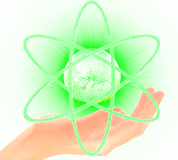F. Cardone, R. Mignani
Abstract
We discuss the possible breakdown of Lorentz invariance -at distances greater than the Planck length- from both the theoretical and the phenomenological point of view.
The theoretical tool to deal with such a problem is provided by a “deformation" of the Minkowski metric, with parameters dependent on the energy of the physical system considered. Such a deformed metric realizes, for any interaction, the "solidarity principle” between interactions and spacetime geometry (usually assumed for gravitation), according to which the peculiar features of every interaction determine -locally- its own spacetime structure.
The generalized theory of relativity, based on the locally deformed Minkowski spacetime, is call “deformed special relativity” (DSR).
In the first part of the paper, we give the foundations and the basic laws of DSR.
In the second part, we analyze some experimental data, which admit an interpretation in terms of the DSR formalism and are, therefore, candidates for displaying a breakdown of the Lorentz symmetry.
They are (i) the superluminal propagation of evanescent electromagnetic waves in waveguides, (ii) the meanlife of the K0S , (iii) the Bose-Einstein correlation in pion production and (iv) the comparison of clock rates in the gravitational field of Earth.
Such analysis provides us with the explicit forms of the related deformed metrics as functions of the energy, thus putting in evidence, in all four cases (and therefore for all four fundamental interactions), departures from a usual Minkowski metric.
This preliminary evidence for a broken Lorentz invariance may be regarded as the signature of possible nonlocal effects involved in the processes examined.
Moreover, the corresponding deformed metrics obtained by our analysis provide an effective dynamical description of the interactions (at least in the energy range considered).
Foundation of Physics, 29, 11, 1735 (1999)








